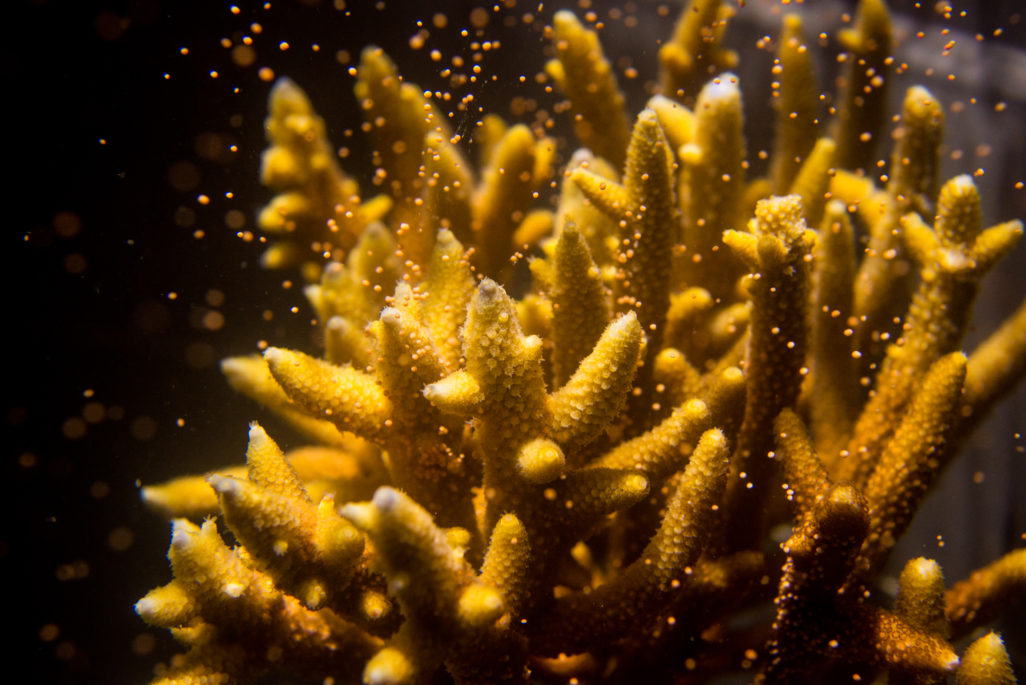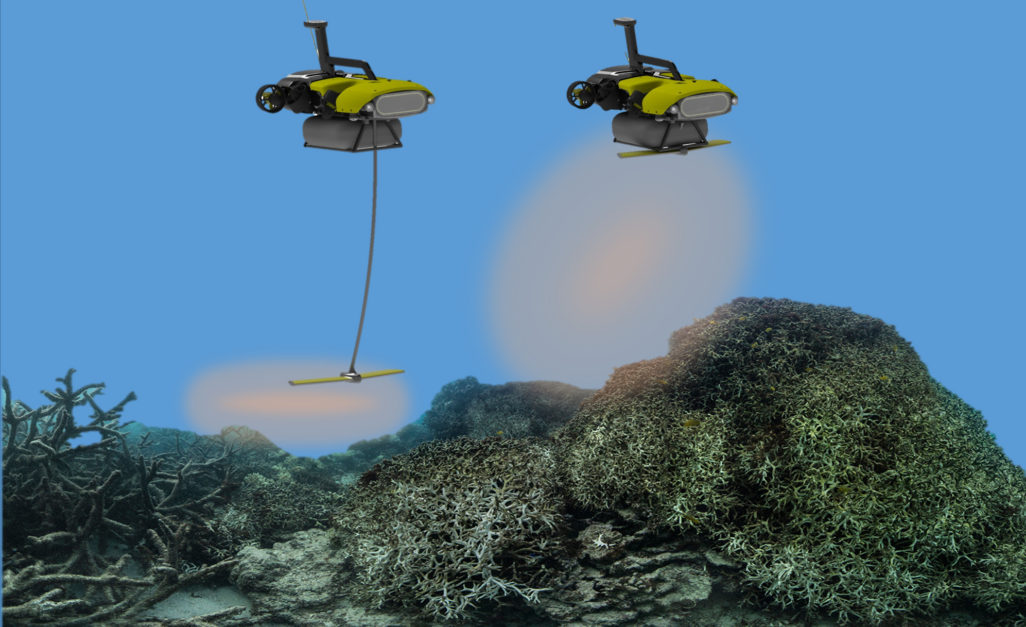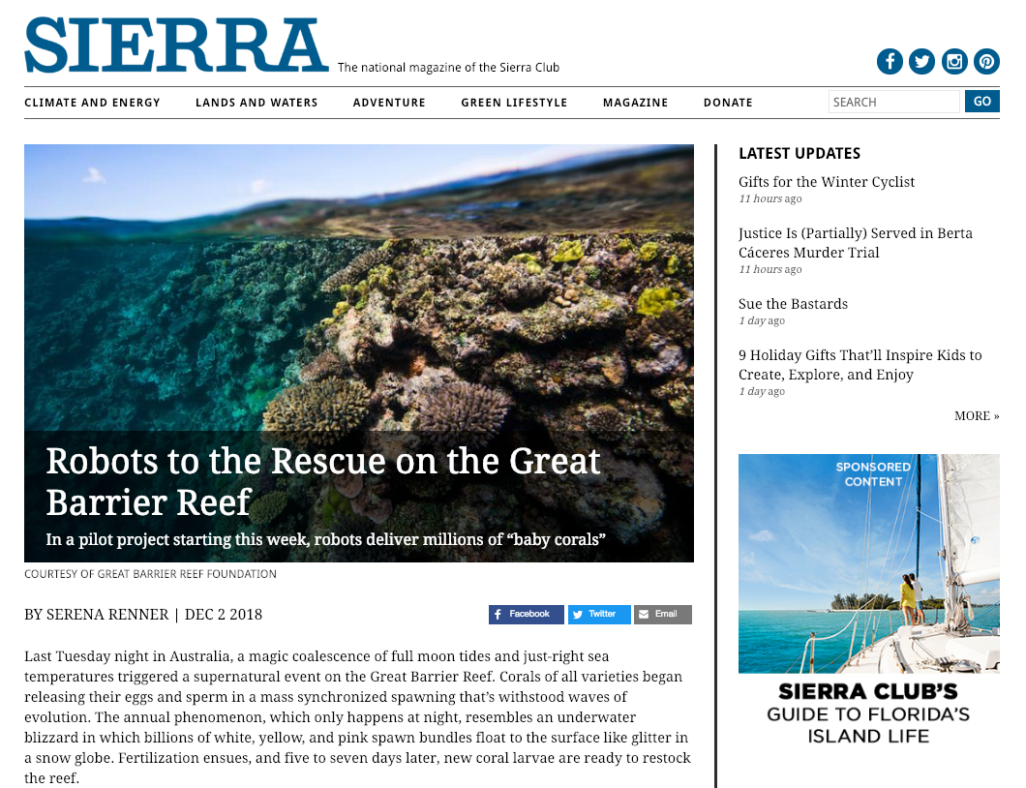
The 2017 coral spawn off Heron Island. Photo courtesy of Gary Cranitch.
In a world’s-first pilot project, robots deliver millions of “baby corals”
In late 2018 in Australia, a magic coalescence of full moon tides and just-right sea temperatures triggered a supernatural event on the Great Barrier Reef. Corals of all varieties began releasing their eggs and sperm in a mass synchronized spawning that’s withstood waves of evolution. The annual phenomenon, which only happens at night, resembles an underwater blizzard in which billions of white, yellow, and pink spawn bundles float to the surface like glitter in a snow globe. Fertilization ensues, and five to seven days later, new coral larvae are ready to restock the reef.
At least that’s what happens on healthy parts of the Great Barrier Reef. Back-to-back heat waves in 2016 and 2017 killed off half the reef’s remaining coral (and spawning capacity) through a process known as bleaching. When corals are overheated, they eject the symbiotic algae that gives them their life and color, transforming once-vibrant reefs into boneyards of coral. Given the frailty of the reef and ever more bleaching on the horizon due to climate change, this year’s coral spawn is more important—and consequential—than ever. That’s why Southern Cross University ecologist Dr. Peter Harrison and Queensland University of Technology engineer Dr. Matthew Dunbabin joined forces to give nature a robotic helping hand.
“On healthy reefs, you would never bother intervening because the reef is doing a fantastic job restoring itself,” says Harrison, whose pioneering research in “larval reseeding,” or “coral IVF,” has set the stage for the current restoration. But on the Great Barrier Reef, and on most reefs around the world, sexually reproductive corals are dwindling. “If we don’t [intervene], there simply won’t be enough larvae naturally produced to enable recovery,” Harrison adds.
With that reality in mind, researchers worked fast to harvest millions of coral eggs and sperm released at Moore Reef, a healthier system located an hour and a half by boat from Cairns. Once collected, the spawn bundles were transferred from giant nets to floating reef enclosures as large as swimming pools, where embryos were reared into larvae, or “baby corals.” Then, once the larvae were mature enough to resettle, they got loaded into autonomous underwater vehicles (AUVs) developed by Dunbabin, then sprinkled onto damaged reefs nearby at the touch of a button.

LarvalBot adaptation of RangerBot. Photo courtesy of Matthew Dunbabin.
(Read the full article on the Sierra magazine website. Originally published December 2 2018)
